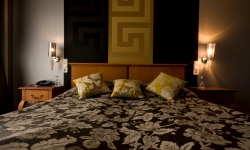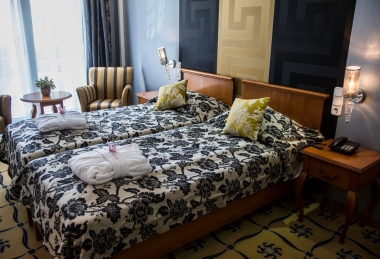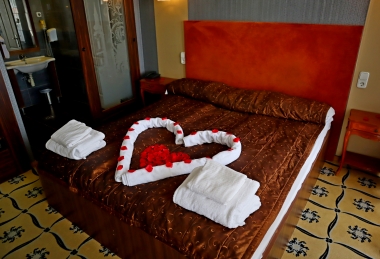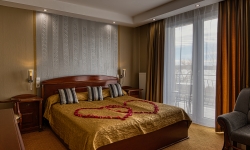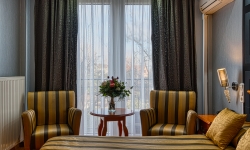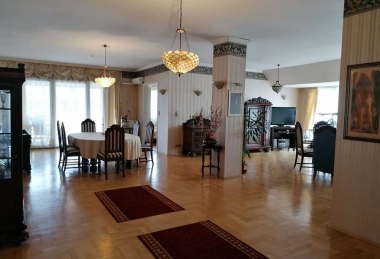Ancient Roman Baths
The northern area of Hungary, which is known as Transdanubia, played an important role in border protection during the era of the Roman empire when it was named the province of Pannonia. The area of our province changed a great deal during the first four centuries of the Empire’s era, yet even so it is known that the Transdanube regions, the area between the Dráva and Száva rivers, and a small sliver of Austria’s eastern half also belonged to the province. Perhaps in a unique way even in the Roman Empire, the natural borders of Pannonia were defined by one single river, the Danube. The borders of the Empire were called limes and its lines encircled many old and modern settlements. If one exclusively takes into account lands currently belonging to Hungary, almost 30 settlements and strongholds can be counted along the Danube. This area includes quite a few old and modern settlements. Strongholds, watchtowers and legionnaire camps dotted these once borders. The civilians in the vicinity serving the needs of stationed soldiers and their camp followers often formed new settlements.
Pannonia didn’t have a shortage of Roman baths, either…
Roman bath houses rooted themselves in Pannonia as well. After the Roman Empire made the Carpathian Base its province under the name Pannonia, scores of new towns were founded. Essentially they built their towns in places where warm and abundant water springs could be secured to supply their bath houses, such as the capital of Pannonia, Aquincum, built in today’s Óbuda region, even the name of which suggests the presence of healing waters. Just so almost 100 heat sources could be discovered in the province of which each and every one heated the homes of governors and citizens. Apart from Buda, many of the other settlements of Hungary, Ráckeve included, boasts ancient ruins. In those days Roman legions might have sent out punitive expeditions from a stronghold in this area, the sunken ruins of which were discovered by diving archaeologists on banks of the Danube in Ráckeve. During the dives it was discovered that its wall stretches 7 meters (23 feet) long underwater before curving in an L-shape. They also found pottery shards from the Roman period at the site. During times of peace the building most likely served as a trading outpost. Even during the beginning of our calendar C.E., the Roman Empire had around 170 public baths and during its golden age 300 liters (79.35 gallons) of water was available per person per day, despite the fact that the water needs of the originally parched town had to be covered from the distant Apennines using aqueducts. The emergence of bath culture dates back to the Roman Empire. Although bathing is not a Roman invention, it was thanks to the Romans that it was given a new meaning.
Let’s Take a Deeper Look into the Magical World of Roman Baths!
Bathing was a daily activity in the Roman Empire. Everyone was equally partial to it, whether they were rich or poor, women or men, young or old. The citizens of the Empire didn’t only frequent the baths to relax and bathe, but rather the baths were citadels of social life, a kind of heart of their communities. This was where people came for recreation, to discuss the day’s events and build relationships, sometimes even with people of a higher social status. The layouts of the Roman baths were uniform and each of them corresponded in order to a procedure. Whoever stepped into the bath house first went to the dressing room (apodyterium), then the next stop was in the hot water room (caldarium) with temperatures of 42-50°C (108-122°F) and where the humidity could reach 100% concentration; due to the temperature of the water, one could only remain here for 30-40 minutes. Following the caldarium, the next room to visit had regenerative and stress-relieving properties, at 37-39°C (99-102°F) it was a room with a moderate temperature (tepidarium), and finally the sequence was finished with the revitalizing, usually open cold-water frigidarium. Each bath was also accompanied by steam baths (laconicum), what is more, in the better bath houses saunas, people to oil, massage and epilate, gyms, libraries, reading rooms and buffets all raised the standards. The Empire’s physicians took notice of the refreshing effects of the baths and founded healing bath culture. Even the smallest spring was considered to have physical and spiritual cleansing properties, in fact it was discovered in the 1st century that water containing sulfur had dampness-expelling and nervous system-restoring effects on human physiology.
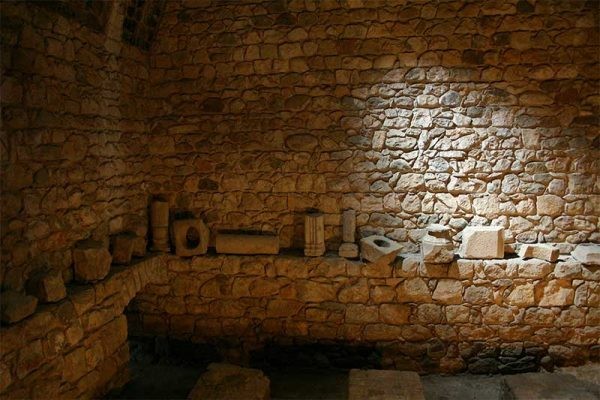 |


